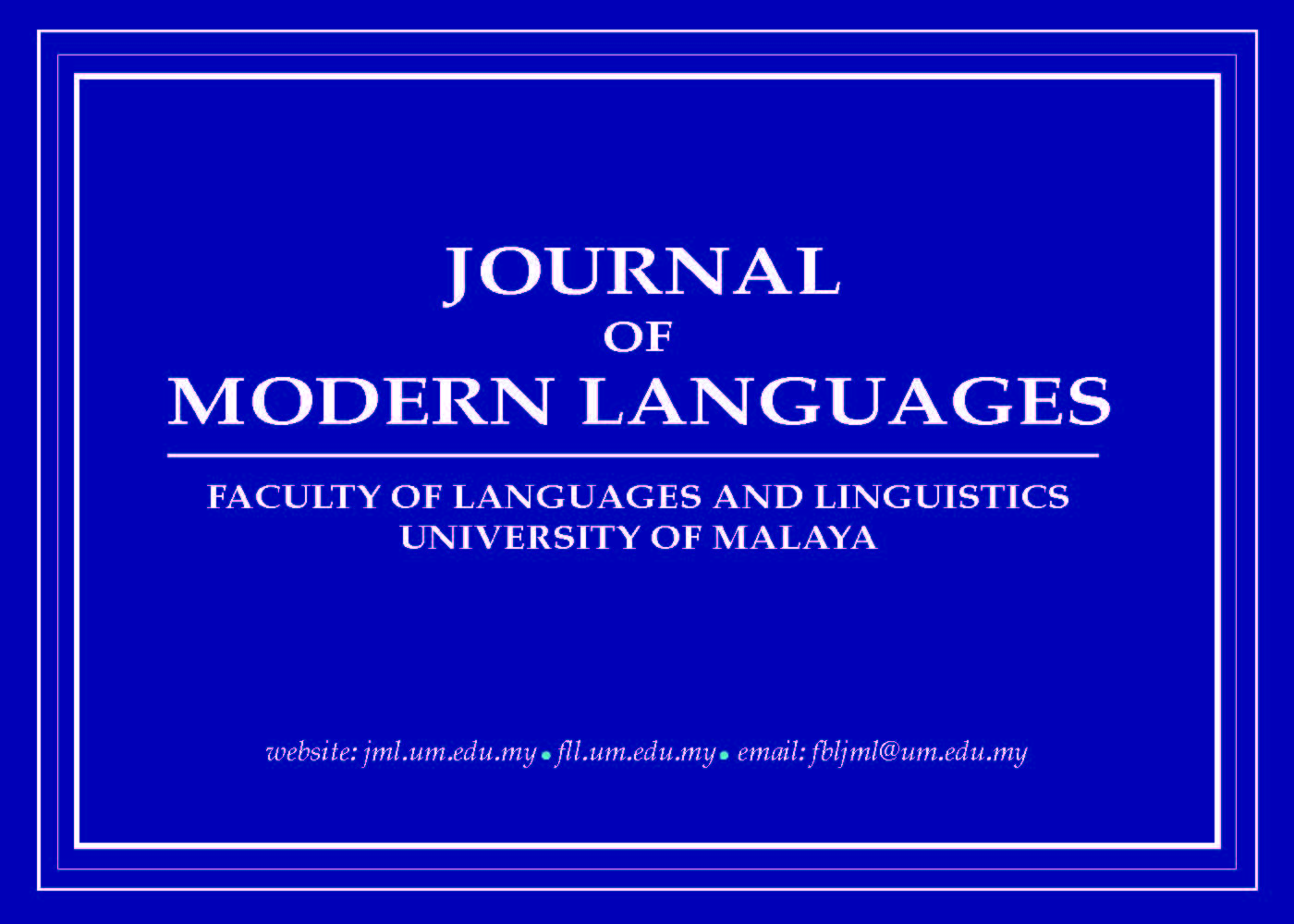Editorial
Main Article Content
Abstract
Welcome to the second issue of Volume 32, Journal of Modern Languages (JML). Here, we present six scholarly works that reflect the diversity and depth of current linguistic research.
In the opening paper, The Development of Paediatric Malay Matrix Sentence Test (PaedMalayMST) Materials through the Construction of a Paediatric Malay Corpus, a collaborative team from Malaysia and New Zealand introduces an innovative approach to the development of a paediatric speech perception test. The authors detail the process of constructing a paediatric Malay corpus, which unveils the rich and intricate nature of Malay children's language use. This work illustrates a remarkable path to the development of tests that can more accurately assess the speech perception skills of children in Malaysia.
The second paper, Female Sympathisers of ISIS as Muhajirahs in ISIS-Affiliated Media investigates the representation of women in ISIS-affiliated media. Through a well-structured critical discourse analysis, the authors explore the complexity of gender roles and dynamics within a politically charged setting. This research provides valuable insights into the portrayal and influence of women within extremist organizations.
Shifting to the realm of audio-visual translation, the article Subtitling Strategies and Translation Accuracy in the Malay to English Translation of ‘Ejen Ali: The Movie’, assesses the quality and strategies of subtitle translations. This work represents a significant step towards understanding how translation strategies affect the accuracy of subtitle translations, a crucial aspect of global media consumption.
The subsequent study, Characteristics of Exocentric Nominal Compounds in Berom: A Semantic View of the Noun-Verb Agentive ‘mwat tabak’ and ‘mwat ha’, provides an in-depth analysis of the agentive nominal compounds in Berom. It illustrates how meaning is shaped by the constituents and the context of usage, serving as a fine example of the intricate interplay between structure and semantics in language. The fifth study, A Study of Number Marking in Izere Nouns, offers a detailed examination of noun inflections for number in Izere. It underscores the importance of understanding the morphological processes involved in less-studied languages.
Finally, our issue concludes with Representation of Social Class and Hierarchy in Bangla Address Terms: A Sociolinguistic Study, which explores the sociocultural significance of address terms in Bangla. It sheds light on the various socio-cultural factors influencing address term choices, and consequently, the reflection of social class and hierarchy in language.
Together, these six papers demonstrate the profound diversity in language and linguistics research. As always, we hope this issue inspires stimulating discourse and further scholarly inquiry in the field of languages and linguistics. We extend our gratitude to all our authors, reviewers, and readers who continue to support and enrich our journal.
P.S.: For your convenience, we have included an Appendix with a compilation of highlighted articles from the past five years.

